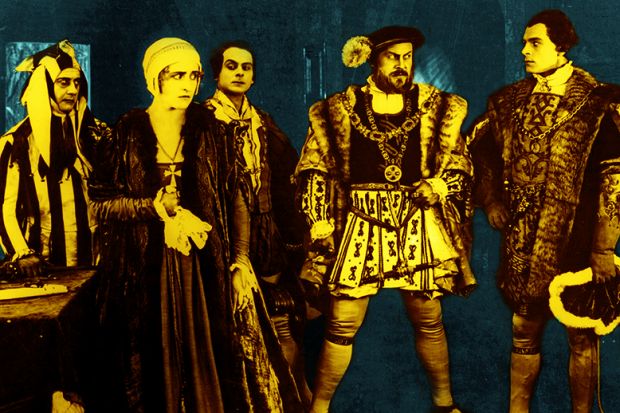In previous issues of Times Higher Education, I have written about the Machiavellian strategies of upwardly toxic academics.
Some of the miscreants I described are old-fashioned bullies, using time-worn strategies of manipulation and abuse to gain power over others in their universities and academic fields. Another kind of toxic scholar (TS) is more refined: they present themselves as well-meaning altruists working to make academe better, when their primary goal is their own advancement.
Either way, a TS thrives only because they are supported by the actions of those around them. So if you are frustrated by having to work with such a colleague, it is worth reflecting on who is shoring up their power. And be aware that not all of those people are acting consciously, out of bad faith. In fact, you may even identify yourself among these eight categories of toxic enablers.
- The Innocent might be new to the institution and has not been around long enough to notice patterns of bad behaviour. They believe the TS’ complaints about other colleagues and often wind up spreading these false stories because it would never occur to them that such a charming person as the TS could be using them. Another Innocent is the disciplinary colleague who sees only the TS’ best side at conferences but does not know how they behave in their home department.
- The Worshipper is often a former student or mentee of the TS. They may feel they owe the TS for their career success, and their sense of duty makes it hard for them to see the TS in a negative light. In other cases, the Worshipper has been hurt by the TS but has internalised the blame. This relationship often has a parent-child quality to it, shaped by guilt, shame and adulation.
- The Idealist sees the TS’ nefariousness for what it is and may even suffer personally from their actions. However, an attachment to a positive worldview keeps the Idealist from confronting their terrible colleague. They may believe the TS can change, or they may be too invested in keeping the department culture “civil” to call out lies when they see them.
- The Wimp is angered by the TS’ actions and may even tell everyone that they will confront the bully. When the argument is under way, however, they are so cowed by the TS’ destructive potential that they drop all resistance. Their desire for self-preservation is understandable, but when powerful people wimp out of doing what’s right, they leave their more vulnerable allies disillusioned and exposed to attack.
- The Ostrich cannot stand open conflict, complicated ethical questions, or anything that disturbs their placid existence. They would rather bury their head in the sand than take a clear stand. They do not necessarily make the TS stronger, but anyone trying to curb the abuse is bound to feel alone in the face of their silence.
- The Opportunist feels they can win something from the TS’ influence and prestige, so they will curry their favour. They might not do anything malicious, but their involvement with the TS makes the TS seem more influential. After all, no one can tell if the Opportunist is complicit or merely doing their job.
- The Minion carries out the TS’ dirty work. They will attack the TS’ detractors, spread vicious lies about other colleagues, and boost the TS’ reputation every chance they get. If they believe the TS’ victim narrative, they may think they are helping someone defenceless. For the pleasure of feeling like a saviour, the Minion may even destroy their own career – but not before they hurt others.
- The Partner in Crime plays the same games of power and deceit as the TS, and does not wish to be discovered. They might not do the TS’ bidding, but they do feel personally attacked by moves to expose malfeasance or reform the institution. For this reason, the Partner in Crime considers anyone who criticises the TS a personal enemy, and they will do whatever they can to stymie the critic’s efforts towards truth and fairness.
Some of these enablers will never abandon the TS because they stand to lose too much: their position, peace of mind or self-image. But others are more malleable. Innocents can be gently offered an alternative viewpoint if they don’t see enough of the TS’ behaviour over time to understand the pattern by themselves. Opportunists will turn against the TS if they see the tides are changing. And Idealists may be convinced that their politeness is doing more harm than good.
And if you do see yourself in any of these archetypes, don’t despair. Many of us have been Wimps at times, for instance. But we too can change, especially in groups. Find the people around you who are no longer willing to let abusive people steamroll over everyone and join forces with them.
While it is hard to dislodge bullies from power, collective resistance can minimise the damage they do to our communities.
Irina Dumitrescu is professor of English medieval studies at the University of Bonn.
Register to continue
Why register?
- Registration is free and only takes a moment
- Once registered, you can read 3 articles a month
- Sign up for our newsletter
Subscribe
Or subscribe for unlimited access to:
- Unlimited access to news, views, insights & reviews
- Digital editions
- Digital access to THE’s university and college rankings analysis
Already registered or a current subscriber? Login








